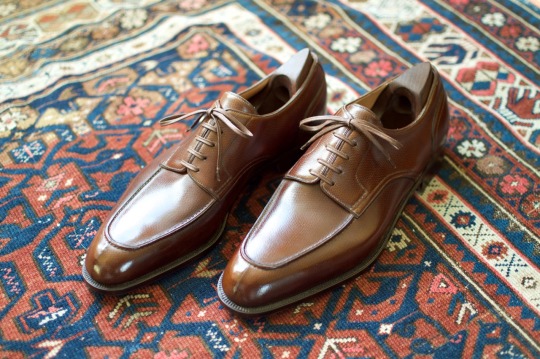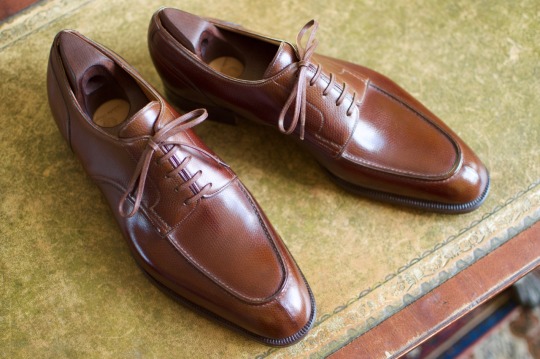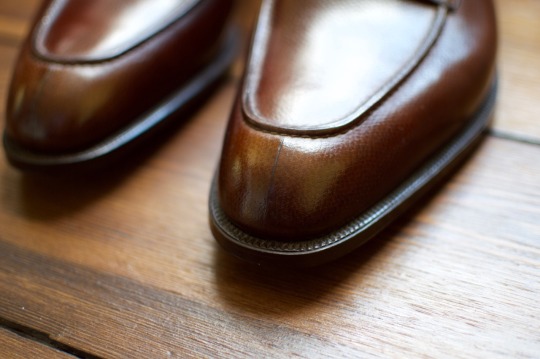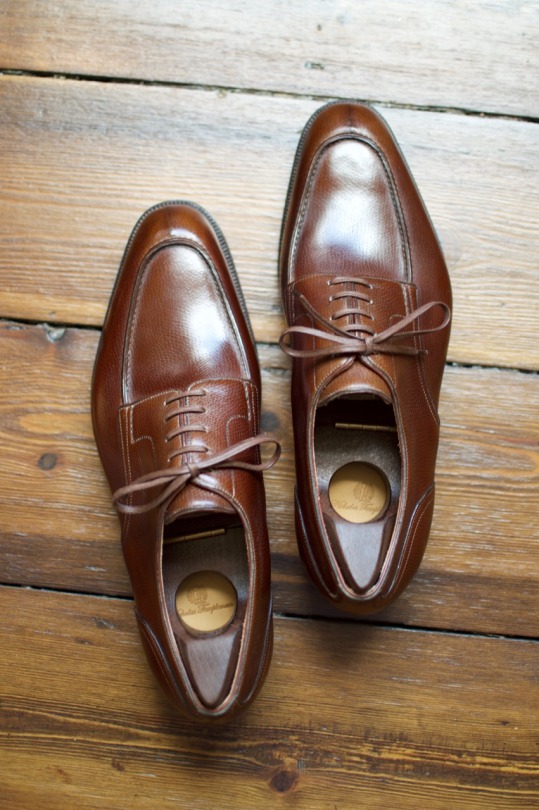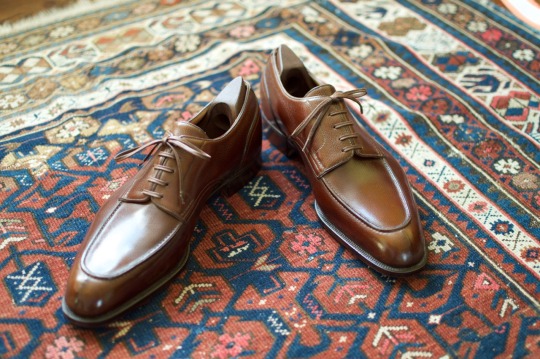
Back in the early ‘90s, GQ hired British writer Peter Mayle for a series of articles. Mayle had just become known for his NYT best seller, A Year in Provence, which was about his time in France. His new GQ series was to be about life’s more extravagant pleasures – the grandest hotels, freshest truffles, softest Mongolian cashmere, etc. The articles were later republished as a book, Acquired Taste. The book is more fluff than substance, but Mayle is such a great writer and so filled with gusto that it’s hard not to get swept away.
The first chapter of Acquired Taste is about bespoke shoes – specifically those made in the West End of London (you can listen to part of the chapter on YouTube). Mayle gets into the ridiculousness of it all in the second paragraph:
To some men – even those who revel in bespoke suits with cuff buttonholes that really undo, or made-to-measure shirts with single-needle stitching and the snug caress of a hand-turned collar – even to some of these sartorial gourmets, the thought of walking around on feet cocooned in money somehow smacks of excess, more shameful than a passion for cashmere socks, and something they wouldn’t care to admit to their accountants. Their misgivings are usually supported by the same argument: what could possibly justify the difference in price between shoes made by hand and shoes made by machine? Unlike the miracles of disguise that a tailor has perform in order to camouflage bodily imperfections, the shoemaker’s task is simple. Feet are feet.
Of course, Mayle goes on to say that feet are not indeed feet. For the price of $1,500 or so (in 1990 dollars), you’re paying for “the comfort of shoes that really fit, and the pleasure of shoes that will grow more handsome with age.”

There are hundreds, maybe even thousands, of these sort of paeans online and in magazines. None of them ever felt convincing to me. Machine-made shoes age just fine so long as they’re made from good materials. And who, besides a small minority, has a difficult time finding their Cinderella slipper these days? Indeed, when Bernhard Roetzel wrote about bespoke shoes years ago, he said he didn’t find the fit to be that much better than ready-to-wear.
Still, the idea of having someone make you a pair of shoes from scratch has an undeniable allure. So, last year, I commissioned a pair from Nicholas Templeman – a former lastmaker and fitter at John Lobb of St. James (not Paris), who recently went independent and started his own firm.
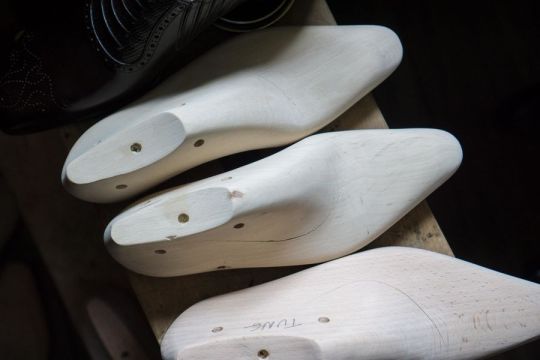
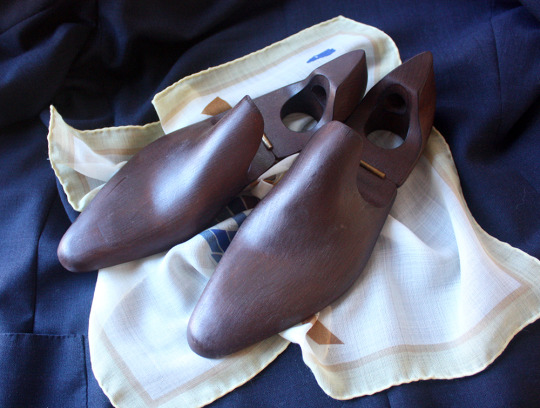
Some readers may remember my previous posts on Nicholas. Since our first meeting, Nicholas carved out my lasts and put together the “rough stuff” for my shoes. We met again about six months ago in San Francisco for my fitting.
Being fitted for bespoke shoes is strange. Much like bespoke suits, where I don’t think you can tell much during the fittings, bespoke shoes have odd proportions when they’re half-made. Without the soles or heels, your feet are firmly flat against the ground, making everything seem longer and pointier. I wasn’t sure how I felt about the shape, but I let Nicholas figure out the particulars.
Nicholas decided he needed to add a little room to the inside quarters, just below the ankle, as well as adjust the toes (adding some depth and rounding off the corners). The whole process took about fifteen minutes – roughly the same amount of time a tailor needs to fit a sport coat.
After returning to London, he adjusted the last, completed the shoes, and had the shoe trees custom-made in France (where they’re made about 1/4″ smaller than the lasts, then hollowed out and colored with a stain). After much anticipation, the shoes were finally delivered to me last week – neatly packaged inside a blue Templeman shoebox, along with a polishing cloth and a tin of Saphir shoe polish.
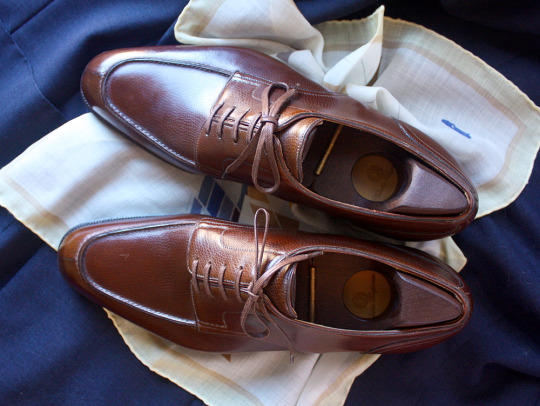
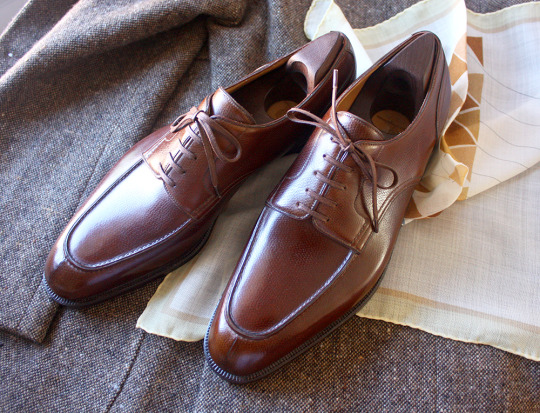
The first thing you notice about bespoke shoes is their shape. These are much more contoured than my ready-to-wear shoes – moreso than Saint Crispin’s, but light years ahead of Edward Green and Crockett & Jones. Which makes sense, really. Ready-to-wear shoes have to fit as many people as possible, otherwise they never leave the shelves. So the waists aren’t cut as tight; the toes not as angled. The left- and right-sides are also more symmetrical, whereas the inner-sides of these Templemans are much higher – following the inner-cone shape of my feet.
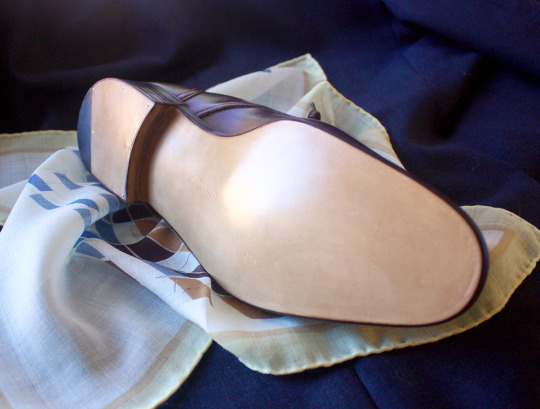
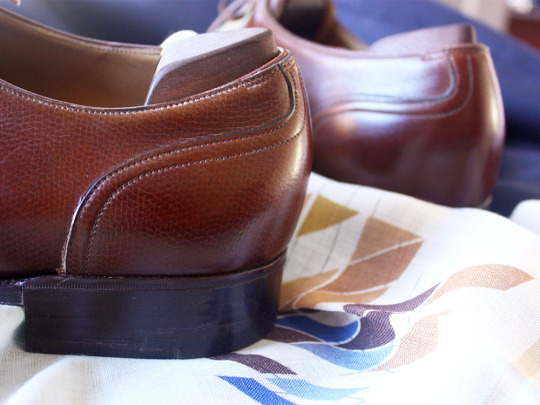
Even though my Norwegians were made with a square waist – a more casual detail than the fiddlebacks people sometimes put on dressier shoes – the soles have a surprising amount of shape. My Aldens, by comparison, sit fully flat on the ground. Nicholas tells me this is because the uppers themselves are more shaped (as a result of the last), which means the welt and sole follow that shaping as well.
There are all sorts of details like this – a bit more curve to the heel cups, for example, which you can’t easily achieve in ready-to-wear. For me, this is the real difference in bespoke. I’ve never had a problem finding ready-to-wear shoes that fit, but while these feel equally comfortable, they’re a lot more contoured (and frankly, handsome). They shave pounds off your feet, and if you favor slimmer trousers like I do, they look better with your clothes.
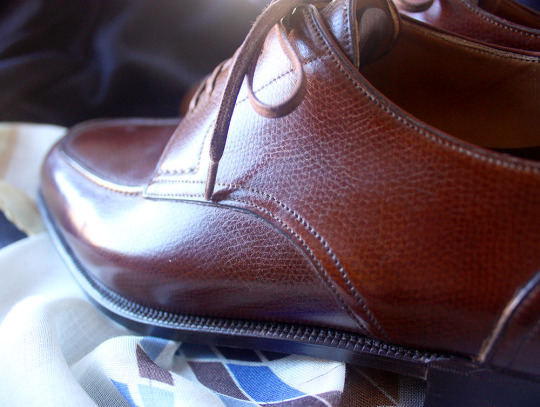

The stitching is also finer. Ready-to-wear manufacturers have to push out a larger number of shoes per day, so lowering the stitch count increases efficiency. I’ve noticed this between lower-end brands and Edward Green, for example, where the second will have finer stitching. These Templemans are finer still, giving them nicer looking lines.
Perhaps one thing to note: it’s possible to cut the welts closer to the uppers in bespoke since most things are done by hand, rather than machine. With this pair, however, the welts are still smaller than most of my ready-to-wear shoes, but Nicholas left them a little wider to suit the style. Tight welts can look great on dress shoes, since it gives them a bit of sleekness, but with this country style – Norwegian split-toes made from a grained calf – there needs to be more “meat.” Something to protect the uppers and make them look more substantial. I think Nicholas got the proportions just right.
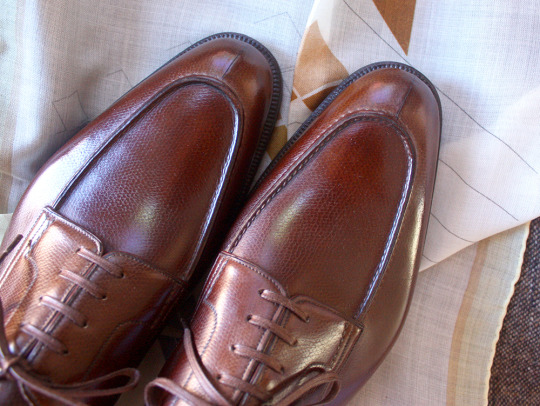
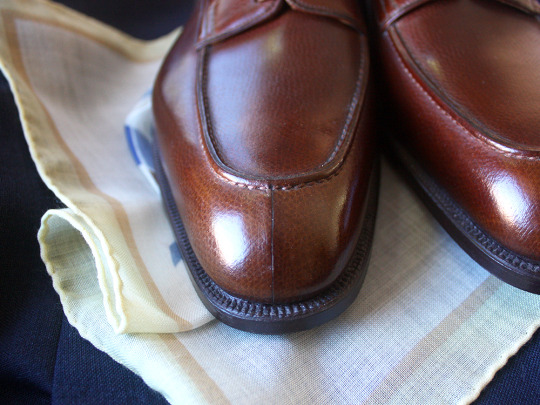
My only hesitation is that the toe seams are slightly off-center, which I wasn’t expecting. Nicholas tells me this is because of the heavy shaping. If you look at the shoes straight-down, you’ll notice that the facings are symmetrical, but since they’re placed on a heavily contoured last, they also don’t go straight down the middle (like you’d see in ready-to-wear). From these slightly angled facings, you get slightly angled aprons. And in order to “straighten everything out” – or at least, not exaggerate the angles – the toe seams have to be slightly offset. If you moved them further towards the center, the facings and aprons would look odd.
I haven’t decided how I feel about the detail yet, but like with some of the things I’ve received from tailors, I think I’ll just wear them for a while and decide later. One of the reasons why it’s good to work with reliable maker is that you know you can always go back for adjustments.
Which brings me to one of the biggest differences between commissioning bespoke shoes and bespoke suits. Shoemakers can adjust things within reason, but they don’t have the luxury of ripping out seams like tailors. Stitching leather is a destructive process, unlike sewing cloth, so you’re limited in some ways. Radical adjustments can be done with enough water, brute force, and alcohol (on the shoes, not in the maker), but otherwise, sometimes things have to be remade.
The other difference is that bespoke shoes can vary even more than bespoke clothes. Anyone who has worked with a tailor knows how much is left to the people in backrooms. Small decisions, such as the shape of patch pockets and the cut of the lapels, can change the look of a jacket. With shoes, minor details become even more important. A fraction of an inch on the apron can make a dramatic visual impact. I imagine this is why it’s good to have a direct relationship with your maker, not just a firm full of makers, and be familiar with his or her other work (which you hopefully like). There has to be a lot of trust.
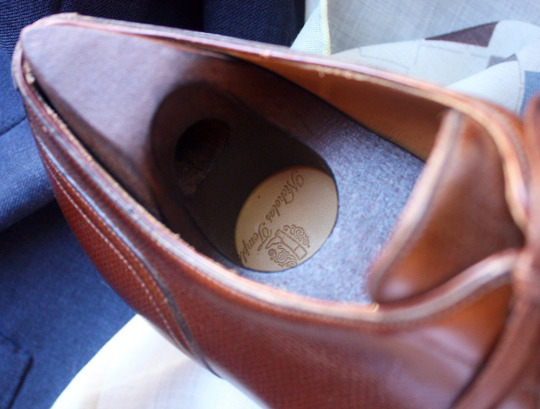
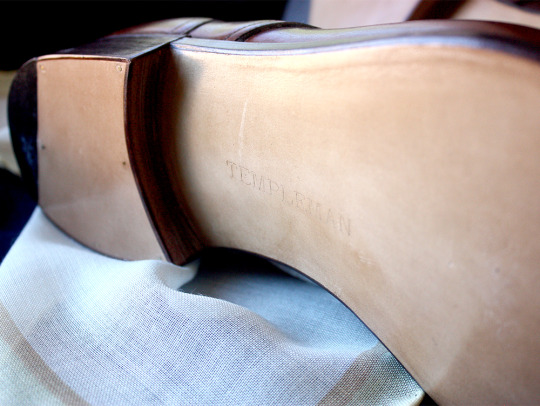
That said, I couldn’t be happier with the shoes. Perhaps it’s enough to say that I’m already considering my second order – either a version of JM Weston’s Chasse (a hunt derby) or a citified wingtip (inspired by these Nicholas made a while ago).
If you’re interested in Nicholas’ work, he’s touring the US next week, stopping by New York City, Boston, and San Francisco. His prices aren’t low, but they’re lower than any of the major West End firms. You can find his tour schedule at his website (and contact him through there, as well). Even if you’re on the fence about an order, I encourage you to make an appointment. Nicholas is a great guy with a great sense of humor, and loves to talk about shoes.
Final note: there’s some speculation these days on whether bloggers get discounts or freebies from bespoke makers in exchange for press. I paid full price for my Templemans, just as I’ve always paid full price with my tailors (including Steed, Ascot Chang, Anderson & Sheppard, Salvatore Ambrosi, etc). I only write about Nicholas because I’m a fan of his work, and hope readers enjoy reading about his creations.
(photos via Nicholas Templeman, Manolo, and me)
